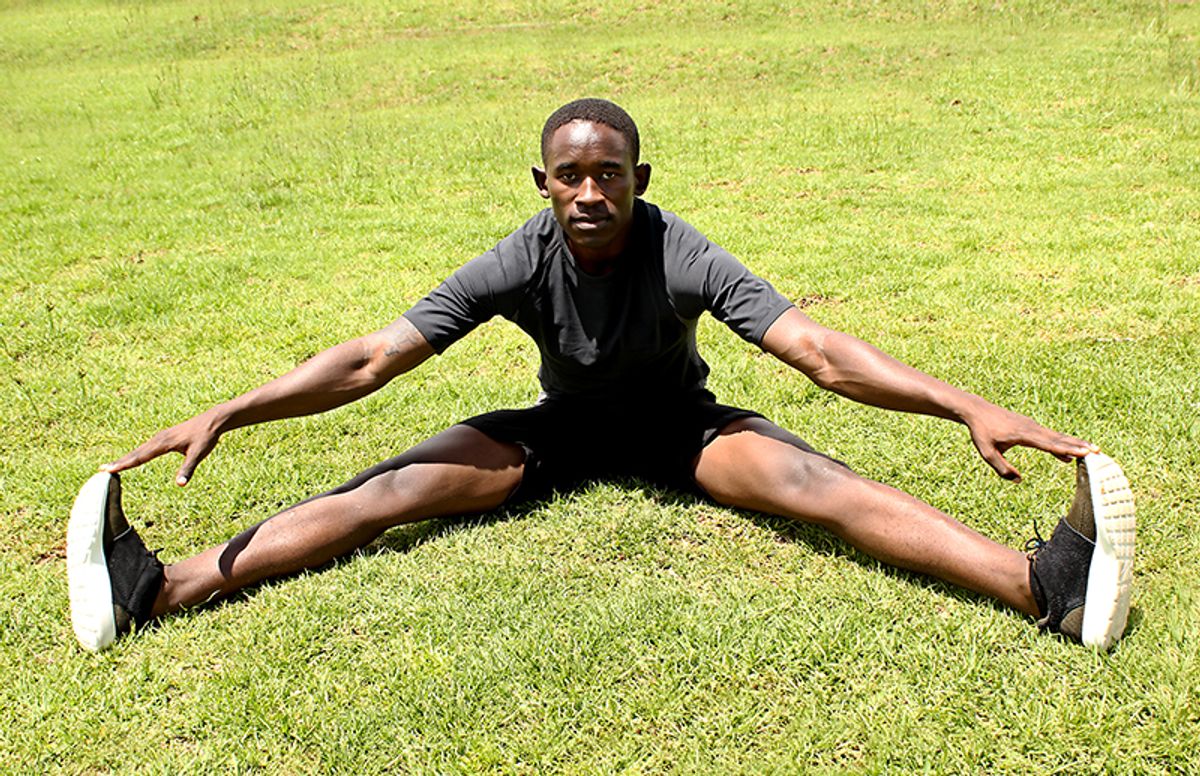
Soothing Nature's Way: Top Tips for Natural Inflammation Reduction
Chow Down on Anti-Inflammatory Eats

Spice It Up with Turmeric and Ginger
Ever wondered why your curry is so darn comforting? Turmeric and ginger might just be the secret superheroes here. These spices are not just about adding a kick to your meals; they're packed with curcumin and gingerol, compounds known for their anti-inflammatory properties.
Turmeric, in particular, has been a staple in traditional medicine for centuries, and modern science is catching up with its benefits. Adding a pinch of black pepper can boost its absorption, making sure your body gets all the good stuff.
- Add to smoothies for a spicy twist
- Sprinkle over roasted veggies for an extra flavor punch
- Stir into soups to warm you up and tone down the inflammation
Remember, consistency is key. Incorporating these spices into your daily diet can help keep inflammation at bay over time. No need to go overboard, a little goes a long way!
Omega-3s: Your Fatty Friends
When it comes to fighting inflammation, not all fats are created equal. Omega-3 fatty acids are the superheroes in the dietary fat world, with the power to combat inflammation and promote overall health. These essential fats can't be made by the body, so it's crucial to include them in your diet.
Omega-3s are found in abundance in fatty fish like salmon, mackerel, and sardines. But if you're not a fan of fishy business, there are plenty of plant-based sources too, like flaxseeds, chia seeds, and walnuts. Here's a quick list of omega-3 rich foods to add to your shopping cart:
- Salmon
- Mackerel
- Sardines
- Flaxseeds
- Chia seeds
- Walnuts
- Hemp seeds
Remember, incorporating a variety of these foods into your meals can help ensure you're getting a good balance of omega-3s for your anti-inflammatory needs.
Don't forget to check for freshness and sustainability when selecting your omega-3 sources, especially with seafood. Freshness ensures the highest nutrient content, and choosing sustainable options helps protect our ocean friends.
Pack in the Antioxidants with Berries and Greens
Berries and leafy greens are like the superheroes of the food world when it comes to fighting inflammation. Packed with vitamins, minerals, and antioxidants, they help neutralize free radicals that can cause oxidative stress and inflammation. Think of them as your tasty little bodyguards!
Berries aren't just delicious; they're also incredibly versatile. Add them to your morning oatmeal, blend them into a smoothie, or just grab a handful as a snack. Here's a quick list of some antioxidant-rich berries to include in your diet:
- Blueberries
- Strawberries
- Raspberries
- Blackberries
Leafy greens, on the other hand, are not only rich in antioxidants but also high in fiber, which can help reduce inflammation and improve gut health. So, don't forget to throw a bunch of spinach, kale, or Swiss chard into your next meal.
Remember, incorporating a variety of these foods into your daily diet can make a significant difference in reducing inflammation naturally. So go ahead, give your meals a green and berry boost!
Get Moving to Groove Past Inflammation

Low-Impact Exercises for a High-Impact Life
When it comes to taming the flames of inflammation, not all exercises are created equal. Low-impact workouts can be a game-changer, especially if high-intensity routines are not your cup of tea or if you're dealing with joint pain. These gentle movements improve circulation and can help reduce the inflammatory response without overtaxing your body.
Swimming, walking, and cycling are perfect examples of low-impact activities that pack a punch in the fight against inflammation. They allow you to get your heart rate up and work your muscles without the harsh impact on your joints that comes from running or jumping.
Remember, consistency is key. Integrating these exercises into your daily routine can lead to significant improvements in your overall health and well-being.
Here's a quick list of low-impact exercises to get you started:
- Swimming: Great for full-body conditioning
- Walking: Easy to fit into your day
- Cycling: Fun and efficient
- Elliptical training: Joint-friendly cardio
- Pilates: Strengthens and tones with minimal impact
Start with sessions that feel comfortable for you, and gradually increase the duration and intensity as your body adapts. The goal is to make these activities a regular part of your life, so find the ones you enjoy the most and stick with them!
Yoga: Stretch It Out and Calm Down
Yoga isn't just about getting into pretzel shapes; it's a holistic practice that can significantly reduce inflammation through stress relief and improved circulation. Regular yoga sessions contribute to a more balanced and calm state of mind, which is crucial in the body's fight against inflammation.
- Hatha Yoga: Ideal for beginners, focusing on slow movements and breathing.
- Iyengar Yoga: Uses props to help with alignment and is great for those with injuries.
- Vinyasa Yoga: A more dynamic style that links breath with movement.
Remember, the key is consistency. Even a few minutes of yoga each day can make a difference in how you feel. Start with simple poses and gradually work your way up to more complex sequences. Listen to your body and don't push it too hard; yoga is about harmony, not strain.
The Magic of Regular Movement
It's not just about the occasional jog or the sporadic gym session. Regular movement is a cornerstone of a healthy lifestyle, especially when it comes to keeping inflammation at bay. Whether it's a brisk walk, a bike ride, or even gardening, consistent physical activity can help reduce inflammation throughout the body.
Consistency is key here. To make it a part of your daily routine, consider the following steps:
- Schedule your workouts like any other important appointment.
- Find an activity you enjoy, so it doesn't feel like a chore.
- Mix it up to keep things interesting and work different muscle groups.
Remember, the goal isn't to become an athlete overnight. It's about finding sustainable ways to integrate movement into your everyday life.
By making regular movement a habit, you're not just fighting inflammation. You're boosting your mood, improving your sleep, and enhancing your overall quality of life. So lace up those sneakers and make your next move towards a healthier you.
Nature's Pharmacy: Herbal Remedies

Willow Bark: Nature's Aspirin
Long before we had pharmacies on every corner, people turned to nature for relief. Willow bark has been used for centuries to ease aches and fight fever. It's the original source of salicin, which is similar to the main ingredient in aspirin.
- Chewed or brewed into a tea, willow bark acts as a natural anti-inflammatory agent.
- It's particularly good for easing lower back pain and osteoarthritis.
- Mild side effects can occur, so it's best to consult with a healthcare provider before starting.
Remember, natural doesn't always mean harmless. Start with small doses and pay attention to your body's response.
While it's not a cure-all, incorporating willow bark into your routine could be a step towards managing inflammation the old-school way. Just like any remedy, natural or not, it's all about finding what works for you.
Green Tea: Sip Your Way to Less Swelling
Green tea isn't just a cozy beverage for a rainy day; it's packed with catechins, powerful antioxidants that have been shown to reduce inflammation. Sipping on green tea throughout the day could be your ticket to a calmer, less inflamed body.
- Catechins help inhibit inflammatory responses.
- Green tea promotes hydration, which is essential for flushing out toxins.
- It's also a great substitute for sugary drinks that can exacerbate inflammation.
Remember, consistency is key. Making green tea a regular part of your routine maximizes its anti-inflammatory benefits.
While green tea is no miracle cure, it's a simple, natural addition to your daily habits that can support your body's fight against inflammation. So, go ahead, steep a cup, and take a mindful moment to enjoy the warmth and wellness it brings.
The Power of Peppermint and Eucalyptus
Peppermint and eucalyptus aren't just for freshening your breath or clearing a stuffy nose. These potent plants pack a punch when it comes to reducing inflammation. The menthol in peppermint soothes while eucalyptus' anti-inflammatory properties get to work.
Eucalyptus oil, in particular, is a superhero for swollen tissues. Just a few drops in a diffuser or diluted in a carrier oil can make a world of difference. Here's how you can harness their power:
- Inhale the vapors from a peppermint or eucalyptus essential oil diffuser.
- Apply a diluted solution topically to the affected area.
- Add a few drops to a warm bath for a full-body relief.
Remember, natural doesn't always mean harmless. Always do a patch test first to ensure you don't have an allergic reaction, and consult with a healthcare provider if you're unsure.
These natural remedies are easy to incorporate into your daily routine and can provide a gentle, yet effective, approach to managing inflammation.
Snooze Your Way to Less Puffiness

The Link Between Sleep and Inflammation
Ever wondered why you feel more swollen after a night of tossing and turning? Sleep is a critical player in regulating inflammation. When you're snoozing, your body gets to work, repairing and restoring itself, and that includes dialing down the inflammation. Lack of sleep, on the other hand, can kick your immune system into overdrive, leading to increased inflammation.
Sleep quality matters just as much as quantity. It's not just about clocking in those hours; it's about how well you sleep during them. Here's a quick rundown of how sleep stages can affect inflammation:
- Deep Sleep: Your body's healing peak, reducing inflammation.
- REM Sleep: Essential for emotional health, indirectly influencing inflammation.
- Light Sleep: Acts as a transition and can be disrupted easily, potentially affecting inflammation control.
Remember, it's not just about getting more sleep, but getting the right kind of sleep. Make it a priority to create a restful environment and establish a calming bedtime routine.
Creating a Sleep Sanctuary
Transforming your bedroom into a sleep sanctuary can be a game-changer for reducing inflammation. Your bedroom should be a temple of tranquility, a place where the stresses of the day melt away as you drift into restorative slumber. Start by decluttering the space to minimize distractions and create a sense of calm.
Temperature plays a crucial role in sleep quality. Aim for a cool, but comfortable environment, typically around 65 degrees Fahrenheit. Here's a quick checklist to get you started:
- Invest in comfortable bedding
- Use blackout curtains to keep it dark
- Consider white noise or calming soundscapes
- Keep electronic devices out of the bedroom
Remember, your sleep environment is personal. What works for one person might not work for another, so feel free to experiment until you find your perfect setup.
Sleep Hygiene Tips for Better Zzz's
Getting a good night's sleep is crucial for keeping inflammation at bay. But if counting sheep isn't cutting it, it's time to revamp your sleep hygiene. Keep a consistent sleep schedule to regulate your body's clock. This means hitting the hay and waking up at the same time every day, yes, even on weekends.
Temperature plays a sneaky role in how well you snooze. Make sure your bedroom is cool, dark, and quiet. Consider investing in blackout curtains or a white noise machine if you're easily disturbed by light and sound. Here's a quick checklist to optimize your sleep environment:
- Comfortable mattress and pillows
- Minimal light exposure
- Quiet or consistent noise level
Remember, your bedroom should be a sanctuary for sleep, not a second office. Keep work materials, electronics, and other distractions out of the sleep zone to prevent your brain from associating the space with activity and stress.
Lastly, establish a relaxing bedtime routine. Whether it's reading a book, taking a warm bath, or doing some gentle stretches, find what calms you and make it a nightly ritual. Sweet dreams!
Stress Less to Suppress Inflammation

Mindfulness and Meditation for a Calmer You
Tuning into the present moment isn't just good for your soul; it's a balm for inflammation too. Mindfulness and meditation can significantly dial down the body's stress response, which, in turn, can reduce inflammation. It's like hitting a 'mute' button on your body's alarm system.
Stress is a known trigger for inflammation. By incorporating mindfulness practices into your daily routine, you can create a buffer against the pressures of life. Here's how to get started:
- Find a quiet space: Dedicate a spot in your home for meditation.
- Set a time: Even five minutes a day can make a difference.
- Focus on your breath: Let your breath guide you into a state of relaxation.
- Be patient with yourself: Mindfulness is a skill that takes time to develop.
Remember, the goal isn't to clear your mind of thoughts but to observe them without judgment. This gentle awareness is what helps ease the mind and, subsequently, the body.
The Role of Laughter and Joy
Ever heard that laughter is the best medicine? Well, when it comes to inflammation, it might just be true! Laughing triggers the release of endorphins, the body's natural feel-good chemicals. These endorphins can temporarily relieve pain and may help lower stress-related hormones that worsen inflammation.
Joy and laughter also encourage a more positive outlook on life, which can lead to healthier lifestyle choices and improved overall well-being. Here's a quick list of ways to incorporate more laughter into your life:
- Watch a comedy show or a funny movie
- Spend time with friends who make you giggle
- Join a laughter yoga class
- Play with pets or children
Remember, it's not about the frequency of laughter, but the quality of those joyous moments that can make a difference in your inflammation levels.
So go ahead, chuckle, guffaw, or snicker your way to a healthier you. It's one of the most enjoyable forms of therapy out there!
Connecting with Nature to Find Peace
Stepping outside might be the simplest yet most profound way to reduce inflammation. Being in nature can lower stress levels, which in turn, can decrease inflammation in the body. Whether it's a walk in the park, a hike through the woods, or just sitting in your garden, the connection with the earth has healing powers.
- Take a moment to breathe in the fresh air and listen to the sounds around you.
- Observe the greenery; the colors and movements of nature are naturally soothing.
- Engage in activities like gardening or birdwatching to enhance your interaction with the environment.
Remember, it's not about the duration or intensity of your outdoor activities, but the quality of the connection you make with nature. Even a few minutes can be beneficial.
Make it a habit to incorporate nature into your daily routine. It's a free and effective way to combat the stresses of modern life and keep inflammation at bay.


